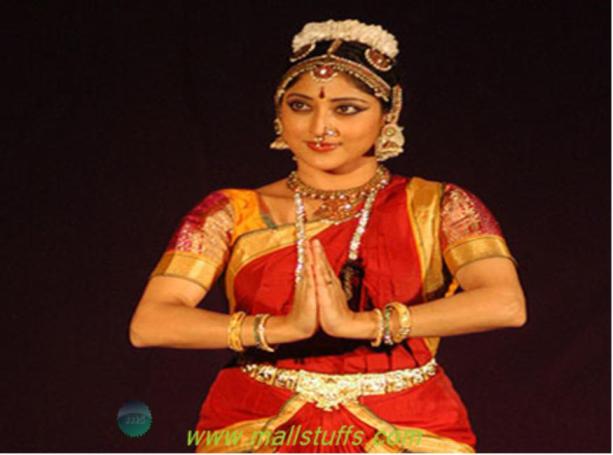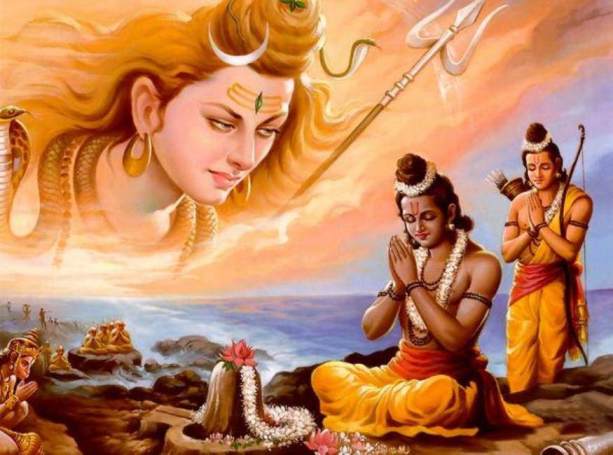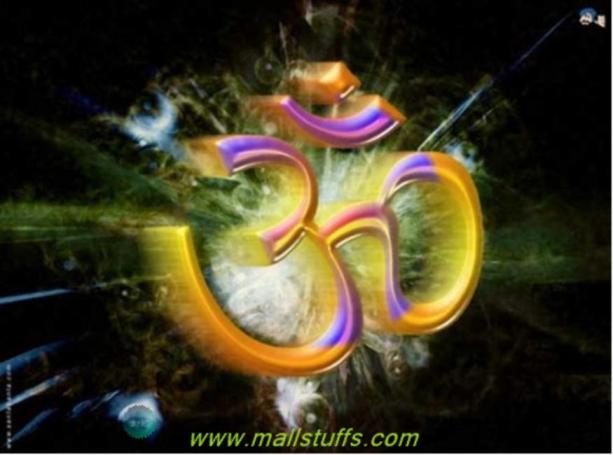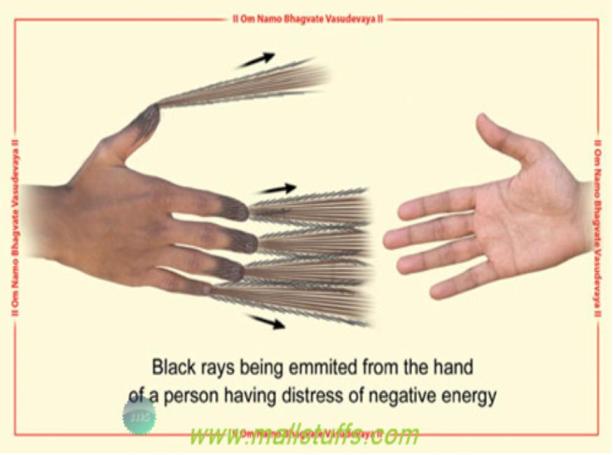
Why Hindus greet namaste and its significance
Namaste friends
Namaste नमस्ते; is a common spoken valediction or salutation originating from the Indian subcontinent. It is a customary greeting in written communication, or generally between people when they meet, or a valediction upon their parting. When used at funerals to greet the guests, the verbal part is usually omitted. Namaste could be just casual or formal greeting, cultural convention or an act of worship.
Formally, Namaste is also called as Namaskar/Namaskaram(In south india)
Meaning of Namaste
Namaste is derived from Sanskrit and is a combination of two words, "Namaḥ" and "te" (a shortened variant of "tubhyam"). Namaḥ means 'bow', 'obeisance', 'reverential salutation' or 'adoration' and te means 'to you' (dative case of 'you'). Therefore, Namaste literally means "bow to you" translated as "I bow to you". Other meanings of Namaste are:
1) 1. “The Divine in me recognizes the Divine in you.”
2) 2. “The sacred in me respects the sacred in you.”
3) 3. “The light within me reflects the light within you.”
4) 4. “Greetings.” (I really like this one!)
“I see you” Greeting of English movie ‘Avatar’ is also said to be derived from this Indian way of Greeting ‘Namaste’.

Why greet Namaste?
1) Hindus not only do Namaste but also bow and close their eyes, as it were, to look into the inner spirit. This physical gesture is sometimes accompanied by names of gods like ‘Ram Ram’, ‘Jai Shri Krishna’, ‘Namo Narayana’, ‘Jai Siya Ram’ or just ‘Om Shanti’ - the common refrain in Hindu chants. This is also quite common when two devout Hindus meet - indicating the recognition of the divinity within ourselves and extending a warm welcome to each other.
2) It has spiritual significance of negating or reducing one’s ego in the presence of other.
For ex: if you have a conflict with someone and if you do him ’Namaste’ the next time you meet him, then his soul will enforce him to neglect the earlier conflict and pay obeisance back to your soul by bowing and doing Namaste. So, Namaste also helps in bringing the people together even when they are enemies.
3) A non-contact form of salutation is traditionally preferred in India and Namaste is the most common form of such a salutation. As opposed to shaking hands, kissing or embracing each other in other cultures, Namaste is a non-contact form of respectful greeting and can be used universally while meeting a person of different gender, age or social status
4) Ideally, Namaste should be done both at the beginning and at the end of any spiritual session or teaching class. Although, this tradition has stopped in modern Indian schools due to objection by other religious minorities, still, this tradition is followed in cultural Indian schools like yoga, ayurveda and others. Usually, ‘Namaste’ is done at the end of class because the mind is less active and the energy in the room is more peaceful. The teacher initiates Namaste as a symbol of gratitude and respect toward her students and her own teachers and in return invites the students to connect with their lineage, thereby allowing the truth to flow-the truth that we are all one when we live from the heart.

Kathakali dancer Namaste after dance class
5) While doing Namaste, the hand position is higher; it usually means reverence and/or worship. The expression with hands placed on top of one's head is usually the sign of utmost reverence or respect. So, every elder should be bowed down and greeted Namaste.
6) The Life force, the Divinity, the Self or the Lord in me is same in all. Recognizing this oneness with the meeting of the palms, we salute with head bowed the Divinity in the person we meet. That is why sometimes, we close our eyes as we do Namaste to a revered person or the Lord - as if to look within. When we know this significance, our greeting does not remain just a superficial gesture or word but paves way for a deeper communion with another in an atmosphere of Love and Respect.

Lord rama Namaste to lord shiva
How to greet Namaste:
The right way of saying Namaste requires you to fold your hands, touch your palms and take the clasped hands close to your heart, resembling the position of hands while performing prayers and then wish your elders 'Namaste'. Talking about how to pronounce Namaste, the correct way is to speak like this "Nam-a-stay".
There can be different ways of saying Namaste. Earlier, lot of importance was attached to the bowing of head. In the rural areas, the old tradition of saying Namaste is still followed. However, in the metropolitans, the style has undergone a major transformation and most of the youngsters generally speak out the word Namaste, but don't really bother to fold their hands.

Aishwarya Rai Namaste
Spiritual meaning of Namaste:
1) The Life force, the Divinity, the Self or the Lord in me is same in all. Recognizing this oneness with the meeting of the palms, we salute with head bowed the Divinity in the person we meet. That is why sometimes, we close our eyes as we do Namaste to a revered person or the Lord - as if to look within. When we know this significance, our greeting does not remain just a superficial gesture or word but paves way for a deeper communion with another in an atmosphere of Love and Respect.
2) The gesture Namaste represents the belief that there is a Divine spark within each of us that is located in the heart chakra. The gesture is an acknowledgment of the soul in one by the soul in another. "Nama" means bow, "as" means I, and "te" means you. Therefore, Namaste literally means "bow me you" or "I bow to you." We bring the hands together at the heart chakra to increase the flow of Divine love. Bowing the head and closing the eyes helps the mind surrender to the Divine in the heart. One can do Namaste to oneself as a meditation technique to go deeper inside the heart chakra; when done with someone else, it is also a beautiful, albeit quick, meditation.
Namaste and namaskar:
Sometimes, namaskar is also used as an alternative to Namaste. Meaning wise, both are more or less same with a very slight difference.
NAMASTE -
1. To elders
2. Neighbors and relatives
3. Own family members.
4. Guest
NAMASKAAR -
1. It's preferred to give it to your Teacher (Guru) especially yoga or spiritual guru.
2. it’s for 60+ and senior citizens
Meaning of omkar and namaskar
Omkar style of salutation is mostly used in Sikhism. It is commonly used in Hinduism too since this word has a deep spiritual meaning according to our religious scriptures.
OM is the sound of life. It is believed that before the universe was created, there was no other sound other than OM and the whole world evolved from it. This is why, OM is often used in meditation since the whole cosmos is summed up in word OM.
KAR means shape/form of our manifestation. Hence, OMKAR means manifestation of OM. i.e manifestation of whole UNIVERSE / COSMOS. OMKAR can be called by various names such as BRAHMA, SHIVA etc. OMKAR is omnipresent and omnipotent and seems to be identical to god but not necessarily so.

The above interpretation of NAMASKAR as NAMAH + OMKAR has been questioned by some experts on the ground that the disappearance of the sound of Om is inexplicable. Grammatically speaking, the objection seems tenable, even though the above interpretation is popularly accepted. In view of this objection, the following interpretation is proposed.
NAMASKAR is made of three words:
NAM + AS + KAR = NAMASKAR
NAM is the root form of NAMAH and has the same meaning as NAMAH - NOT ME.
AS means "To be" or "To exist". Another word derived from the same root is Astitva which means existence.
KAR means doer or one who makes or creates. For example, KAR can be seen in the words Kalakar, Chitrakar, Karmkar, Charmkar. In the above words, the suffix kar leads to the meaning of one who creates art or painting or work or leather. ‘Kar’ can also be heard as the suffix in most of the maharashtrians surnames which means that their traditional profession would have been related to creating something, as explained above.
ASKAR would hence mean the creator of all that exists or the one who causes the property of being or existence.
Why Namaste and not hand shake?
 Avoid a Hand Shake: It tranfers undesirable raja-tama components! Avoid a Hand Shake: It tranfers undesirable raja-tama components! | |
In short, in a handshake, since you touch the other person, the raja-tama (sexual purity) components in one person will get transferred to the other person, thereby lowering his sattvikta (Purity levels). If you are practicing Spirituality, then your objective should be to perform acts which increase our sattvikta and not decrease it.
How does one do Namaskar to an individual of the same age group?
When meeting someone of the same age-group do Namaskar by joining the fingers and placing tips of the thumbs on the Anahat chakra (at the centre of the chest). This type of Namaskar increases the spiritual emotion of humility in the embodied soul. Sattva frequencies from the universe are attracted by the fingers (which act as an antenna) and are then transmitted to the entire body through the thumbs which have awakened the Anahat chakra. This activates the soul energy of the embodied soul. In addition, by doing Namaskar in this manner to each other, frequencies of blessings are also transmitted.
A. 'While paying obeisance to God, brings the palms together.
1. The fingers should be held loose (not straight and rigid) while joining the hands or palms.
2. The fingers should be kept close to each other without leaving any space between them.
3. The fingers should be kept away from the thumbs.
4. The inner portion of the palms should not touch each other and there should be some space between them.
Note: The stage of awakening of spiritual emotion (Bhav) is important to the seeker at the primary level. Hence, for awakening spiritual emotion (Bhav), he should keep space in between the joined hands, whereas a seeker who is at the advanced level should refrain from leaving such space in between the palms to awaken the unexpressed spiritual emotion (Bhav).
B. After joining the hands one should bow and bring the head forward.
C. While tilting the head forward, one should place the thumbs at the mid-brow region, i.e. at the point between the eyebrows and try to concentrate on the feet of the Deity.
D. After that, instead of bringing the folded hands down immediately, they should be placed on the mid-chest region for a minute in such way that the wrists touch the chest; then only should the hands be brought down.
Underlying Science in this action
 Subtle picture while offering Namaskar (1) Subtle picture while offering Namaskar (1) | Subtle picture while offering Namaskar (2) | |
A. The fingers should not be stiff while bringing the palms together because this will lead to a decrease in sattva component from the vital and mental sheaths and thus increase the raja component in them. By keeping the fingers relaxed, the subtlest sattva component will get activated. With the strength of this energy, embodied souls are able to fight powerful distressing energies.
B. In the Namaskar posture, the joined fingers act as an antenna to assimilate the Chaitanya (Divine consciousness) or the Energy transmitted by a Deity. While joining the palms, the fingers must touch each other because leaving space between the fingers will result in accumulation of energy in that space. This energy will be immediately transmitted in various directions; therefore the seeker's body will lose the benefit of this potent energy.
C. After joining the palms, bow a little. This posture puts pressure on the navel and activates the five vital energies situated there. Activation of these vital energies in the body makes it sensitive to accepting sattvik frequencies. This later awakens the 'Atma shakti' (i.e. soul energy of an embodied soul). And later, Bhav is awakened. This enables the body to accept in large measures the Chaitanya emitted by the Deity.
D. Touch the thumbs to the mid-brow region. (Please see images above.) This posture awakens the Bhav of surrender in an embodied soul, and in turn activates the appropriate subtle frequencies of Deities from the Universe. They enter through the ’Adnya chakra’ (Sixth of the 7 chakras in the Kundalini) of the embodied soul and settle in the space parallel to it at the back interior of the head. In this space the openings to all the three channels converge; namely, the Moon, the Central and the Sun channels. Due to the movement of these subtler frequencies in this space, the Central Channel is activated. Consequently it facilitates the speedy transmission of these frequencies throughout the body, leading to purification of both the gross and subtle bodies at the same time.
E. After doing Namaskar, to completely imbibe the Chaitanya of the Deity (that has entered the hands by now), instead of bringing the folded hands down immediately, place them on the mid-chest region in such a way that the wrists touch the chest.The 'Anahat chakra' is located at the centre of the chest. Akin to the Adnya chakra, the activity of the Anahat chakra is also to absorb the sattva frequencies. By touching the wrists to the chest, the Anahat chakra is activated and it helps in absorbing more of the sattva component.

Benefit of surya namaskar
Each one of the postures in Surya Namaskar was designed to benefit a portion of the body. The very first act of bringing the palms together in front of the sternum facilitates the spreading of the scapula which can become scrunched during a normal day of stress. When lowering into Plank Pose, the triceps are engaged and by holding the pose a few seconds longer, strengthened. The legs are engaged in alternately stretching and grounding into a pose such as Warrior Two. By maintaining this posture for the length of several breaths, the quadriceps of the forward bending leg along with the hamstrings of the back outstretched leg are strengthened with the effort of keeping you balanced. Contracting your abs throughout the series will ensure the safety of your lower back and have the added benefit of whittling your waist. Surya Namaskar is a sequence of 12 postures that flow one into the other guided by the inhale and exhale of your breath. Always starting and ending in a standing position, you'll engage every major muscle group as you stretch and ground into every pose. Linking the postures with your breath ensures the safe execution of every pose that demands exertion and the release of tension when in counter-pose.
 Surya namakar
Surya namakar
Modern science has only touched the surface of its research into the benefits of practicing yoga. What ancient masters knew intuitively, modern science seeks to quantify with statistics and in-depth studies.
Namaste also helps in avoiding many contact related diseases like Bird Flu, MEASLES
, INFLUENZA etc. Recently Indian government also release a circular encouraging citizens to do Namaste instead of handshake to avoid chicken bird flu
So, before I end, here is my small poem.
Namaste is Hinduism way of salutation and greeting,
‘Divinity within recognizes your divinity’, its meaning
Namaste bring closeness, reduces enmity and ego
Ignoring enmity, respect and affection one show
Close your eyes and do Namaste while you bow
Recognize other soul, let the inner divinity flow
One should do Namaste to elder and teachers
Creating love and respect makes you feel better
Namaste should be done when one worship god
Following which, one reached sweet lord abode
Namaste shows your adoration and pure devotion
Do Namaste devotedly for freedom and Salvation
Reference:
Note: Images used on this website
are either a production of Bhaktivedanta Book Trust(https://www.krishna.com), Iskcon
Foundation or were found in google search under "Free to use and share". If any
of the images presented here violates copyright issues or infringes anyone copyright
or are not under "Fair use", then please bring it to our notice. Read
Disclaimer for more.
Share this to your friends. One of your friend is
waiting for your share.
Related Articles
How hanuman flew at the speed of 660 km per hr
Bhagavad gita Chapter1, verse 2, english and hindi poetic translation with teachings
Example of historic examples against present caste based system
Why Hindus greet namaste and its significance
Why Animal worship in hinduism
Science in hinduism-Evolution in vishnu avatars part 2
Ram Chahe Leela-Goliyon ki rasleela english poetic translation with hindi subtitles
Why arvind kejriwal and aam aadmi party may fail in future
How chanting AUM or mantras heals diseases
Pushpaka Vimanas-The first flying airplane on earth
Post Comment